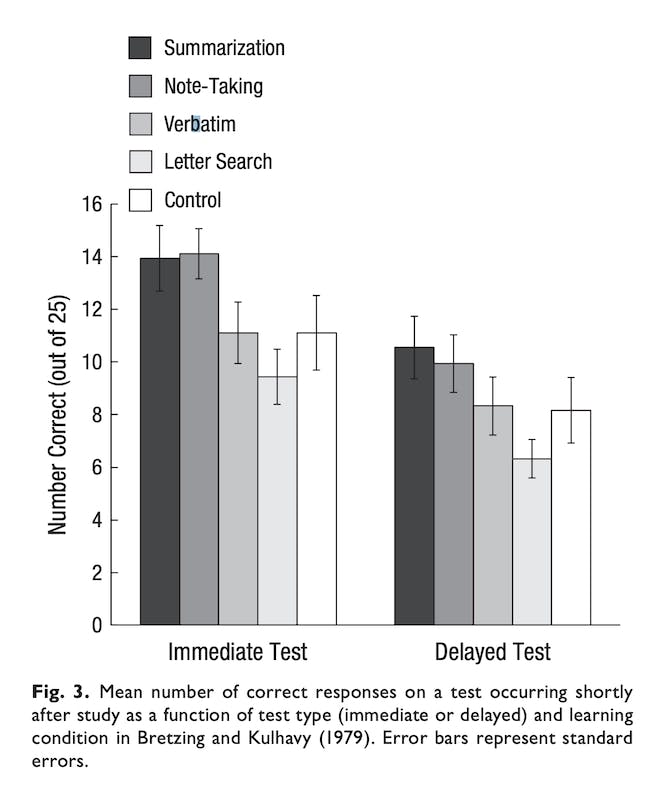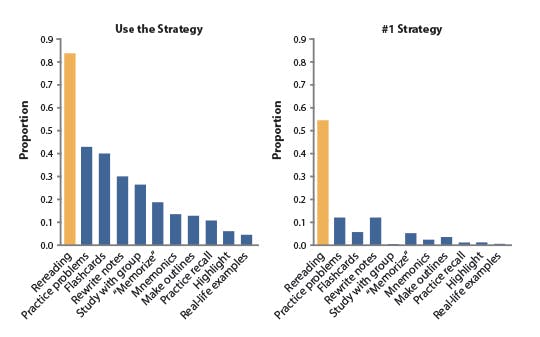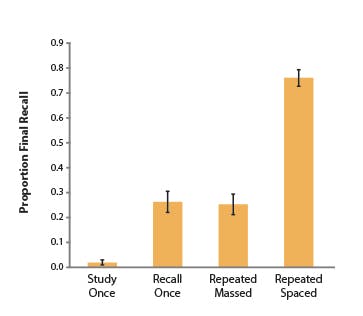How to Gain Most Out of Your Books
Research proven techniques to improve your learning
I always wondered why is that I can remember fiction books but struggle to keep any knowledge about non-fiction or technical books. I would highlight, summarize, or take notes, and read the same thing many times. I had a feeling that they can’t be the most efficient way to learn because it took too much time and yielded no fruits.
After spending some time on google, I found some research-proven techniques that have helped me a lot, and below I am sharing them with you. These techniques will help you nail any examination, crush any interview, or gain a deeper understanding of any topic.
The mind is a vast storehouse or space; memories are objects stored in that space; and retrieving a memory is akin to searching for and finding an object in a physical space — Roediger
What I will discuss in the Article-
Why certain learning methods do not work
Summarization or note-taking does not work
Why highlighting does not work
Rereading is a waste of time
Keep in mind. Some techniques mentioned above might work for a few people, those who have been doing it for years. But these techniques are not so efficient for learning and fall far behind the techniques I will discuss.
Proven techniques that work
Zettlekasten method (Best note-taking technique)
Active Recall (For more retention)
Spaced Repetition (Best retrieval-based learning technique)
gif by Giphy
Let’s start with why certain learning methods do not work
1) Summarization or note-taking
 Summarisation is a common technique that seems intuitive to improve learning. To learn a large amount of information, students often break it down to summaries or notes. They try to capture the gist excluding unimportant or repetitive information.
Summarisation is a common technique that seems intuitive to improve learning. To learn a large amount of information, students often break it down to summaries or notes. They try to capture the gist excluding unimportant or repetitive information.
According to the research by Bretzing and Kulhavy, summarisation boosts learning and retention when compared to copying exact text, reading, and writing only important words.
However, one cannot conclude that summarisation is the best learning technique. There are hundreds of ways to summarise a text: one-word summary of a sentence, oral presentation of the entire text, one sentence per paragraph. Later, I will explain the Zettlekasten method, one of the best note-taking techniques.
summarization is not one strategy but a family of strategies — Pressley et al
More about the conducted research- Bretzing et al.90069-9)
2) Why highlighting does not work
 Source: Imgflip
Source: Imgflip
This is the most common one. I have seen a lot of my friends painting their textbooks yellow, believing that it will help them learn. Fortunately or unfortunately, I could never do that because I would always lose my highlighter.
We rate highlighting and underlining as having low utility. In most situations that have been examined and with most participants, highlighting does little to boost performance. It may help when students have the knowledge needed to highlight more effectively, or when texts are difficult, but it may actually hurt performance on higher-level tasks that require inference making — Dunlosky et al .
So, highlighting does not work, but let’s highlight why that is the case.
Marking does not require much processing, and thus we even mark not important things.
We always tend to over-mark texts which reduce the degree to which it can be distinguished from regular text, and non-distinctive text is harder to remember.
More about the conducted research — Dunlosky et al
3) Rereading is a waste of time
 Survey data from Karpicke, Butler, & Roediger (2009)
This graph shows the preference of learning techniques used by college students. The graph proves that more than half of the students use rereading, and even more preferred it as their #1 strategy for learning. Other techniques such as Practice recall (which is far better) ranked way behind rereading.
Survey data from Karpicke, Butler, & Roediger (2009)
This graph shows the preference of learning techniques used by college students. The graph proves that more than half of the students use rereading, and even more preferred it as their #1 strategy for learning. Other techniques such as Practice recall (which is far better) ranked way behind rereading.
A wealth of research has shown that passive repetitive reading produces little or no benefit for learning (Callender & McDaniel, 2009)
But some studies show that rereading can be beneficial because it strengthens our nerves and creates long-term memory. However, it is often time-consuming and benefits are far lesser than the losses. Spaced repetition is like rereading, but it is far more effective. It would be discussed later in the article.
More info about the research conducted: D. KRUG, T. DAVIS, AND J. GLOVER
I know it will be hard for you to phase out these common techniques out of your life, but believe me, learning techniques discussed below are much more effective.
Let’s make our lives easier by using the proven techniques for learning
1) Zettlekasten method
This method of taking notes is elaborately discussed in the book called How to Take Smart Notes by Sonke Ahrens
“If you want to learn something for the long run, you have to write it down, If you want to really understand something, you have to translate it into your own words.” — Sonke Ahrens
Just for your knowledge, Niklas Luhmann , who developed ‘Zettlekasten’ method, has written more than 70 books and over 400 articles before his death.
The idea here is to create a note of an idea that you get after reading something important. Do not copy the same thing because copying always leaves out the context and it leaves you with mere words that mean nothing. Looking at your notes if you ever thought, “Why the heck I highlighted this?” then you are making the beginner mistake.
The main power of this technique comes from the way you store these notes. Usually, we leave our notes in the book we read, this means every time you want to find the note you have to refer to the book. That’s not the right way of doing it.
Here is how to do it successfully —
Take one note for one idea. It allows you to find them easily, which is more important than just storing them. Don’t note the idea, thinking that I got it from that book, rather think of it as an idea that will be helpful later.
Take physical notes because it is easy to copy-paste on a computer and you think more while you are writing
Behind the note add a bibliographical reference to the page in the book (idea from Nat Eliason’s blog)
This is the most important part. Store the note in the context you would want to find it later, rather than you found it in. You can make boxes such as Productivity, Programming, AI, ML. You can use an app called Notion to do it if you don’t like making boxes.
This technique is extremely powerful, so be sure to utilize it.
I found a very good article by Blake Reichmann about this technique
2) Active Recall
Active Recall aka Practise testing is one of the most underutilized studying techniques. Why? because people don’t like to test themselves as it evaluates their learning capabilities.
more than 100 years of research has yielded several hundred experiments showing that practice testing enhances learning and retention -Dunlosky et al.
There are many ways to test yourself, you can create flashcards and write questions on them, and every time you need a revision just answer those flashcards. There is a great app called Anki which allows you to do this, it can sync across multiple devices, store thousands of flashcards, and give you data about your progress.
The main idea of active recall is to retrieve information from your brain, which allows you to remember for longer periods of time. Memory retrieval strengthens memory and you can boost its effects using spaced repetition discussed below.
I found a good article by Shu Omi , on this topic.
3) Spaced Repetition (For more retention)
 It is a common practice to reread a book a few days before the test, and surely you can score better on that test, but this method does not create a long-lasting memory. After the test, we often forget what we read and the day goes on. When another test arrives the cycle repeats. This takes a lot of time and it makes no sense to read the same thing every time you have a test.
It is a common practice to reread a book a few days before the test, and surely you can score better on that test, but this method does not create a long-lasting memory. After the test, we often forget what we read and the day goes on. When another test arrives the cycle repeats. This takes a lot of time and it makes no sense to read the same thing every time you have a test.
This (Fig 1) is what the forgetting curve looks like. If you just read something once you easily forget it within a few days. If you read it again some days afterward, and again after a few more days, and again after around a month, then the memory strengthens. The idea is to allow yourself to forget it a bit and then study it again, this allows your brain to rewire itself and strengthens your memory for that topic. The best way to do this using Active Recall discussed above.
 Fig (2) shows the benefits of different retrieval-based learning. The data shows that Spaced Repetition is almost 80% more efficient than studying once, and around 50% better than recalling once and massed repeating. Recalling once means testing yourself to check if you remember it or not. Massed repeating means checking yourself multiple times, but at the same time, not spaced out in days, weeks, or months. Finally our holy grail, Spaced Repetition means spreading out your tests at different intervals.
Fig (2) shows the benefits of different retrieval-based learning. The data shows that Spaced Repetition is almost 80% more efficient than studying once, and around 50% better than recalling once and massed repeating. Recalling once means testing yourself to check if you remember it or not. Massed repeating means checking yourself multiple times, but at the same time, not spaced out in days, weeks, or months. Finally our holy grail, Spaced Repetition means spreading out your tests at different intervals.
I would highly recommend you to go through all the research papers linked in the article. They will give a more detailed insight about each of the techniques and their effectiveness. I would also suggest you to stop using ineffective popular techniques, it will be hard at first but I assure you you will be much more productive. I specifically suggest you to make it a habit of using Zettlekasten method because it has a compounding effect that would help you later in life.
